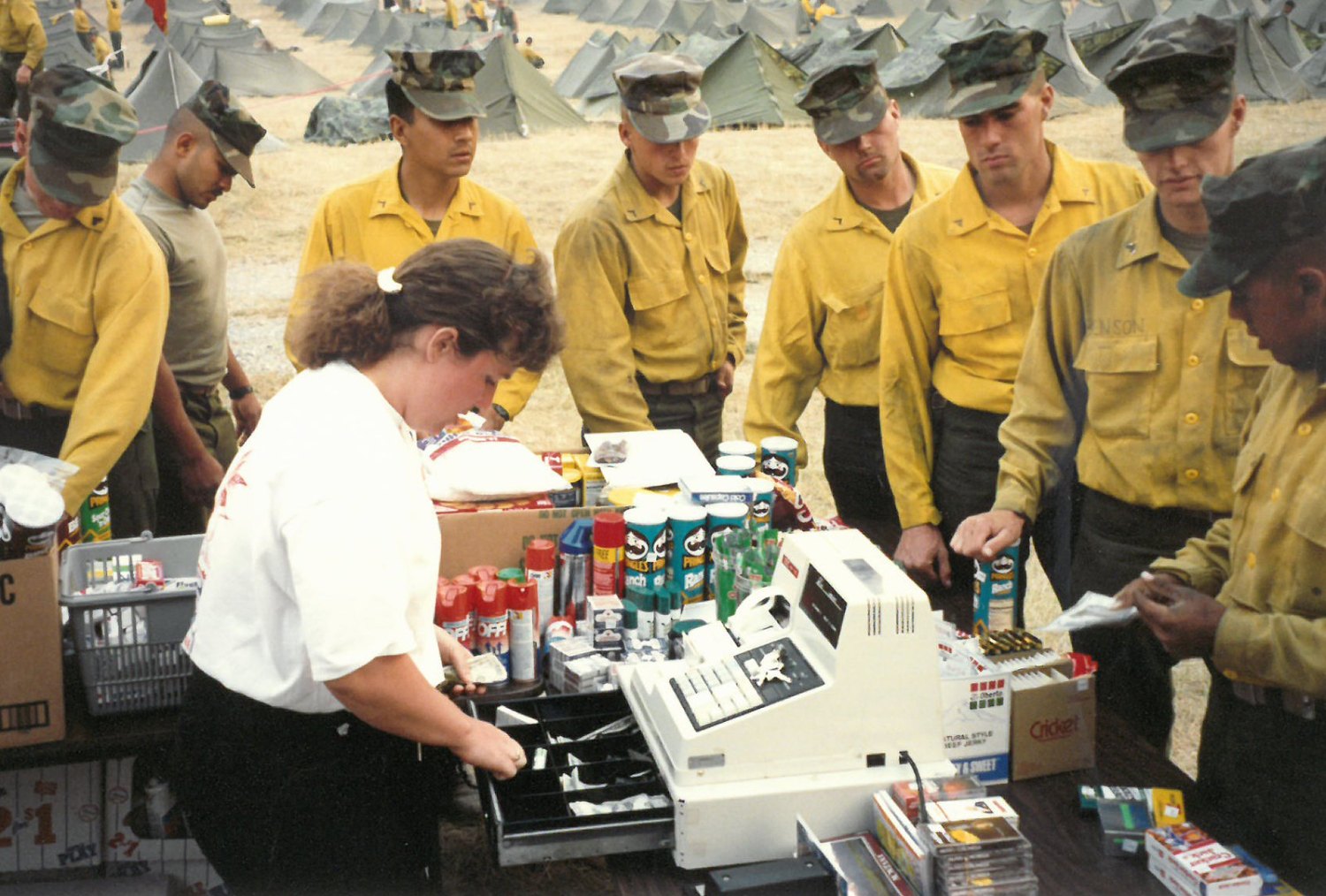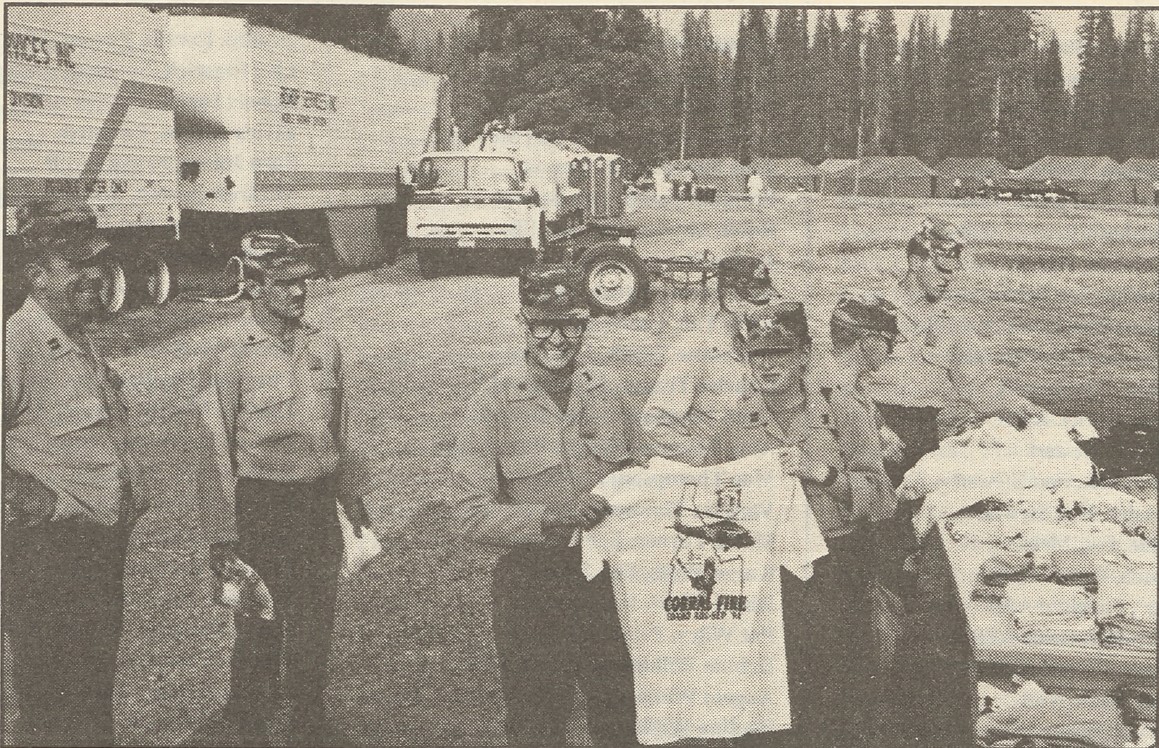Thirty-one years ago, in early August 1994, military troops were deployed from as far away as Forts Hood and Riley to help fight forest fires in Montana, Idaho and Washington. Soon after they arrived, Exchange vans and trailers were there to take care of their needs.
The Malmstrom AFB Exchange supported more than 500 troops and about 300 firefighters near Missoula, in western Montana, with a 40-foot trailer. Mountain Home AFB, using a 24-foot truck, supported almost 800 troops from Fort Hood, as well as 150 Army National Guardsmen and 1,100 civilian firefighters near Idaho City and McCall in western Idaho.
The Fairchild AFB Exchange supported 1,500 National Guardsmen and 700 firefighters in central Washington, with mobile field Exchanges in a 40-foot trailer and in two vans. In addition, the Fairchild BX served 700 firefighters who were camping on base. One of the Fairchild volunteers was current Western Region Vice President Robert Rice, who had been with the Exchange a little more than a year.
According to an American Forces Information Services story that was reprinted in the October 1994 Exchange Post, when Malmstrom’s support began on Aug. 7, it was limited to two tables and merchandise pulled from the main PX. But the next day, a 40-foot trailer arrived on site with an emergency order from the Oakland Distribution Center.

“The 40-foot trailer was immediately turned into a basic branch exchange with the use of gondolas and lighting fixtures,” Malmstrom General Manager Shawn Dorcy wrote in a letter to headquarters. “We have received overwhelming positive responses from the soldiers and are actively working to fill each of their individual needs, to include having barbers on site by the end of the week. In all aspects. we are trying to make these heroic fire fighters feel at home.”
Dorcy added that Exchange volunteers stayed in tents during the expedition, and remained on the scene 24 hours a day. The Malmstrom BX also set up a snow cone machine, a putting green (which led to a putting competition among units) , a mini-theater, and T-Shirts depicting the firefighting support, designed by AAFES associate Michael Storruston.
A call went out to Fort Lewis/McChord AFB for additional help. Two fires known as the Corral and Blackwell complexes had burned more than 50,000 acres after lightening struck Aug. 3. Two volunteers from the McChord Exchange, Alicia Hooper and Robert Pickering, loaded an Exchange van with anticipated high-demand items, then drove the 500 miles to McCall, where a field exchange was set up about 10 miles out of town, up a winding, rutted mountain road. The air was thick with smoke from fires barely two miles away.
By the time sales started, a long line of customers was waiting. When the troops from Fort Lewis 555th Engineering Brigade learned the team was from “home,” they expressed their appreciation. The troops wanted inexpensive cameras, sweats, magazines, alarm clocks, toothpaste, tobacco, flashlights and health/beauty care items—all of which were available.

The Exchange provided support for a little more than a month. “From Aug. 7 through Sept. 13, we provided direct support to more than 5,000 troops,” Lt. Col. Allen Lutz, plans and operations officer, said at the time. “The U.S. Forest Service was able to provide sodas and candy jars, and we provided the rest.”
Sources: Exchange Post archives; One Hundred Years of Service: A History of the Army and Air Force Exchange Service.





Leave a Reply